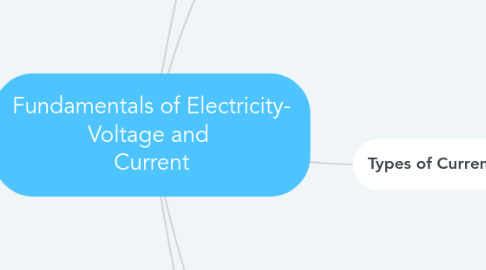
1. Voltage and Current: What are the differenes
1.1. Volatge is the cause and current is effect
1.2. Electricity
1.3. Voltage
1.3.1. E
1.3.2. V
1.4. Current
1.4.1. I
2. Bohr’s Model of Atom
2.1. Atom
2.1.1. Nucleus
2.1.1.1. Protons (+)
2.1.1.2. Neutrons
2.1.2. Electrons (-)
3. Types of Current
3.1. Direct Current (DC)
3.1.1. Advantages
3.1.1.1. No frequency
3.1.1.2. Easy Transmission of energy
3.1.1.3. Lower line resistance and hence less loss
3.1.1.4. Never induces reactance in the line
3.1.2. Disadvantages
3.1.2.1. Losing energy in transmission
3.1.2.2. Less reliable and available in case of HDVC (high voltage direct current)
3.1.2.3. possible to convert the DC into AC but too complex and expensive
3.2. Alternative Current (AC)
3.2.1. Advantages
3.2.1.1. Easy transform
3.2.1.2. Easy convert to DC
3.2.2. Disadvantages
3.2.2.1. Need Transformers to transform betweens 2 or more different points
3.2.2.2. Risks
3.2.2.2.1. Dangerous in high volatge
3.2.2.3. Expensive to transmit electric charges for long distances
